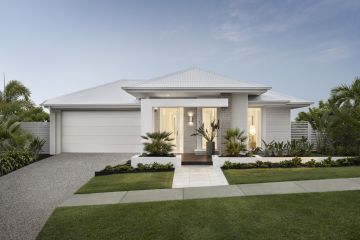Design Matters: Canberran with a disability can't find a new home

This week Tony talks to a Canberra resident (name withheld by request) who, about 10 years ago, was diagnosed with a progressive, neurological disease. He now has a disability and is permanently dependent on a wheelchair, shower and toilet commode, and the use of a walker for transfer. He lives in the ACT and is 72.
TT: What is the problem you were faced with?
A: In December last year, we had to abort the sale of our lovely, tri-level home, as after months of searching we could not find a house, town house or apartment that was suitable either to rent or buy in the ACT; with that I mean flat, no steps anywhere, (wheelchair accessible, without major modifications), or with elevator and a shower and toilet, large enough to accommodate a commode over the toilet, and an accessible shower without a step or ridge, and be able to move around. We also looked for parking space large enough to allow for a wheelchair transfer into a car.
TT: What is your current situation?
A: We have inspected many properties and have been unable to find one that suits our needs. Usually we are let down by access to the home, the size of the bathrooms not allowing for a wheelchair or commode and multilevels. Eventually, we’ll have to sell our home, unfortunately. So, this story threatens to repeat itself in the near future.
TT: Your observation and experience.
A: A strategic planning policy to address the needs of the disabled for housing seems to be lacking in the ACT (and nearby NSW). With an ageing and more disabled population there will be a growing need for suitable and affordable accommodation that addresses special needs. Also, the current NDIS cut-off age for any help is 65.
TT: Your further comments and/or recommendations
A: We saw no evidence of any law or regulation that requires for a minimum percentage of accessibility in any new development of houses, townhouses and apartments, only primarily available to the elderly or disabled. Neither were we informed of any existence thereof by the sales representative if such law or regulation had been adhered to or existed or the availability of accessible premises. I think there should be.
I am aware of the existence of “Liveable Housing Design Guidelines”, standards, construction and building codes. However, there seems to be a need for an assessment to determine if the guidelines match the requirements and if a compatibility gap exists, noting that there can be a wide range of needs, also over time.
All stakeholders, including disabled users, government(s), developers, architects, designers, builders, etc need to be involved and make recommendations to establish compulsory standards and to incorporate accessibility requirements into their work.
Tony Trobe is director of the local practice TT Architecture. Is there a planning or design issue in Canberra you’d like to discuss? Email tonytrobe@ttarchitecture.com.au and at ttarchitecture.com.au
We recommend
States
Capital Cities
Capital Cities - Rentals
Popular Areas
Allhomes
More
- © 2025, CoStar Group Inc.







